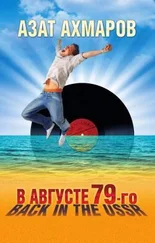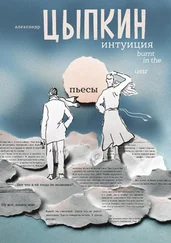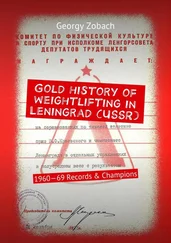Tom walked toward the west end of the building, headed to the three colossal first stage boosters resting sideways on the shop floor. The Saturn V rocket was made up of three different stages, each one with its own engines and fuel. The first stage was the mightiest and biggest of them all: 140 feet tall and 33 feet wide. Its job was to lift the 3,250-ton rocket off the ground and propel it to over 6,000 mph some 40 miles high before the workhorse was discarded.
Each one of those mammoth bottom sections that Tom approached were in different phases of development. The first two were close to completion, each slated for an unmanned test launch. As he passed behind the giants, he looked up at the five huge F-1 engines showing, organized like the five dots on a single die. Two were on the bottom, one in the center, and two high above. Each engine had a red protective shroud covering its outlet. If the protective cover was removed, Tom could step inside the flared out nozzle with outstretched arms and still not touch any part of it with his hands. The machines were that big. They were the most powerful liquid-fueled engines ever built. These engineering marvels were designed to operate for only two and a half minutes following launch. After that short firing time, the engines would shut down just before the massive first stage structure would be released from the rocket, falling to the Atlantic Ocean to be swallowed up and never seen again.
His eyes feasted on the third one of these monsters. It had scaffolding surrounding it. This first stage was labeled S-1C-3, designated for the first manned flight. A pang of jealously ran through him wondering who would be launched by the booster, knowing the lucky sons of guns would probably be destined for the moon. He was convinced it wouldn’t be him.
Much of the debate on the piping issue had to do with fluid dynamics and heat transfer, causing Tom to dig up his old college engineering knowledge just to hang with the discussion. The engineers were concerned the lines were not long enough and too close to the other components. Tom hiked up the metal scaffolding stairs to get a firsthand look, the cold silence broken only by his brisk footsteps. As he turned to head up the second flight of stairs, he noticed the plumbing was already lying on tarps next to each engine on the metal, grated landing. Once he reached the level platform between the two engines, he turned toward the engine to his right. The missing pipes created a small opening within a cluster of plumbing, allowing him to get an even better view of all the components inside. When he reached the engine, he carefully slipped his head in, before wriggling his upper body like a snake around obstacles. The inside was dimly lit by the building’s ceiling lights, sending streaks of light penetrating through the engine’s small gaps. After his eyes adjusted, he was able to see fairly well inside. The internals sparkled with shiny new parts and piping, like the engine of a new car on a showroom floor.
As he studied the connections, he could tell some of the needed changes had already been made. He casually moved his head around, studying the rest of the engine, curious about its makeup. He flinched at an odd sight. A metal part showed streaks of grinding marks, which stood out among the perfection within the engine. He repositioned himself to get a better look, eventually pressing his forehead up against a cold metal pipe. As he studied the marks, it appeared a partial stamped letter had not been completely ground out, indicating that someone had been trying to erase a part number or something. He exited cautiously and straightened up, eyeing the engine. He rubbed the back of his neck. Something didn’t seem right. If it was a part number, why was it removed ? Certainly the engine manufacturer in California would expect NASA to question why such an anomaly existed within the pristine engine. He was curious if the issue had already been addressed.
Tom turned toward the other engine across the scaffold landing, curious if the same grinding marks were inside it. As he navigated his way over he saw a closed red tool box lying on the tarp next to the removed piping. Opening it, he found what he was looking for; a flashlight. With determination he snatched it, turned it on and worked his head into the other engine, trying to maneuver his body into the same position as before. When he brought the flashlight over and shone it on the part, he was shocked to see cryptic lettering of a kind he had never seen before. This was definitely not a part number he was familiar with. He steadied the light as he focused in, trying to come up with a clue about what he was looking at. He shook his head. He was stumped. The markings must be a secret code of some sort, which was completely out of character for NASA. He wondered if this stamped marking should have been ground out too, and either it was missed or it hadn’t been done yet. Questioning if the same marks were on the engines above, he climbed up the stairs to check them out. Unfortunately, none of the three had the piping removed, preventing him from inspecting inside. With the building practically empty, he would have to wait until the next day to get answers. Right after his morning meeting he would track down the floor manager and see what he could find out about the mystery.
SITTING IN A small conference room within the confines of the cosmonaut training center, Viktor Alexandrov was puzzled as to why he had just been pulled from an exercise. Dressed in his jumpsuit, Viktor sat across from the man he suspected was a KGB agent. He had not seen the man since the Kremlin meeting over a year ago.
Viktor presumed this visit had something to do with the production of the secret engine combustion chamber attachments he was ordered to oversee. Two intense months struggling to match the part with the specifications of NASA’s F-1 engine using the NK-15 design was a major challenge for all involved. But the parts were finished on time, and as far as Viktor knew, had been secretly smuggled out of the country, destined to solve America’s engine problem. Unfortunately, the time-consuming assignment caused Viktor to miss out on critical cosmonaut training, essentially stripping him of any chance at an early moon flight.
The man took off his glasses. “You probably wonder why you are here.”
Viktor didn’t know how to address the man since they were never introduced. If he was KGB, Viktor would leave it up to the agent to offer his name. Straightening up in his chair, Viktor answered, “Yes, sir.”
The agent leaned over. “I am here to confirm that you hid incriminating evidence somewhere on the parts sent to the United States.”
“Yes, sir. The descriptive information was placed in a hidden but secure area using invisible paint as requested. We also included a cryptic serial number stamped on the part in an obvious location that probably would be found.”
“Good. I’m sure they will erase that one.”
Viktor was curious why he was being quizzed, speculating it was somehow related to the recent failure of the Soyuz 1 that had killed a friend. The accident struck all the cosmonauts hard, and with the recent problems being experienced with the N1 rocket, some were questioning if the moon missions would ever happen. He assumed Party leaders were probably feeling the same way and wanted to verify evidence existed so they could insinuate the parts were stolen if the Americans did not live up to their end of the bargain, passing over lunar material. “Why do you ask?”
The agent lifted an eyebrow and said in a stern voice, “That is classified information.” The man stood up unexpectedly, signaling that the meeting was over. He extended his hand. “I want you to know I will be giving a recommendation to your superiors. You did an invaluable service for your country.”
Читать дальше












